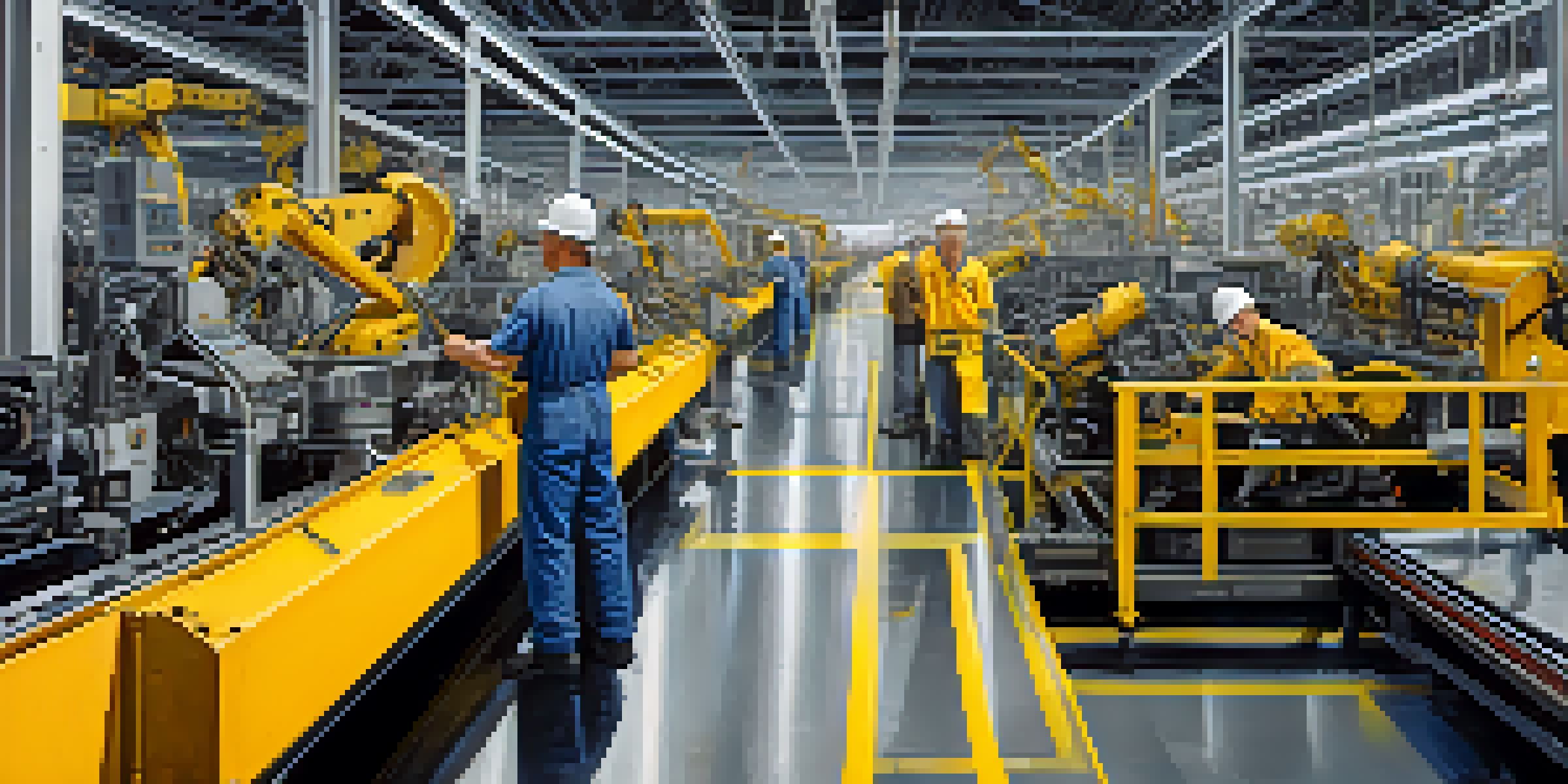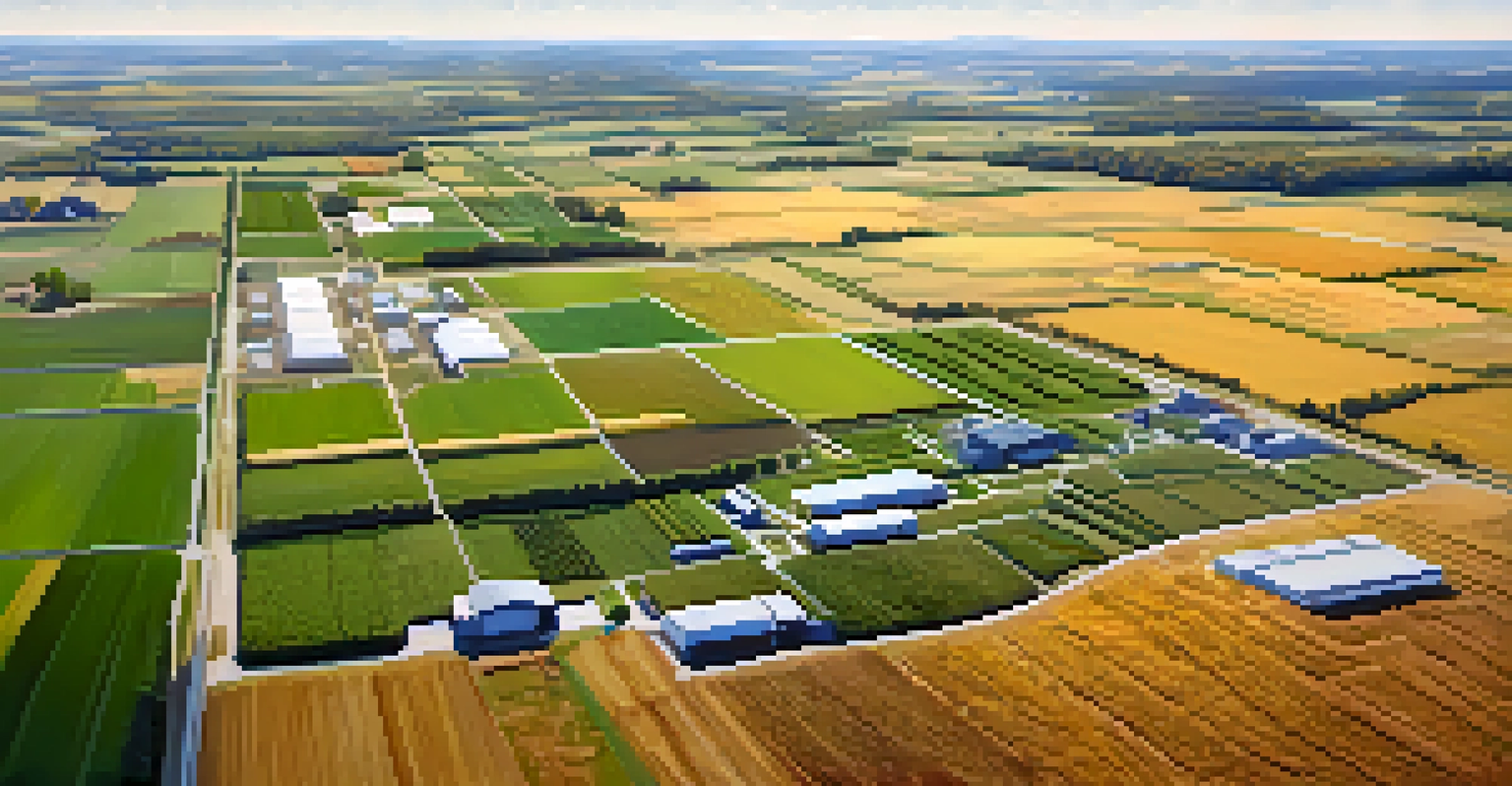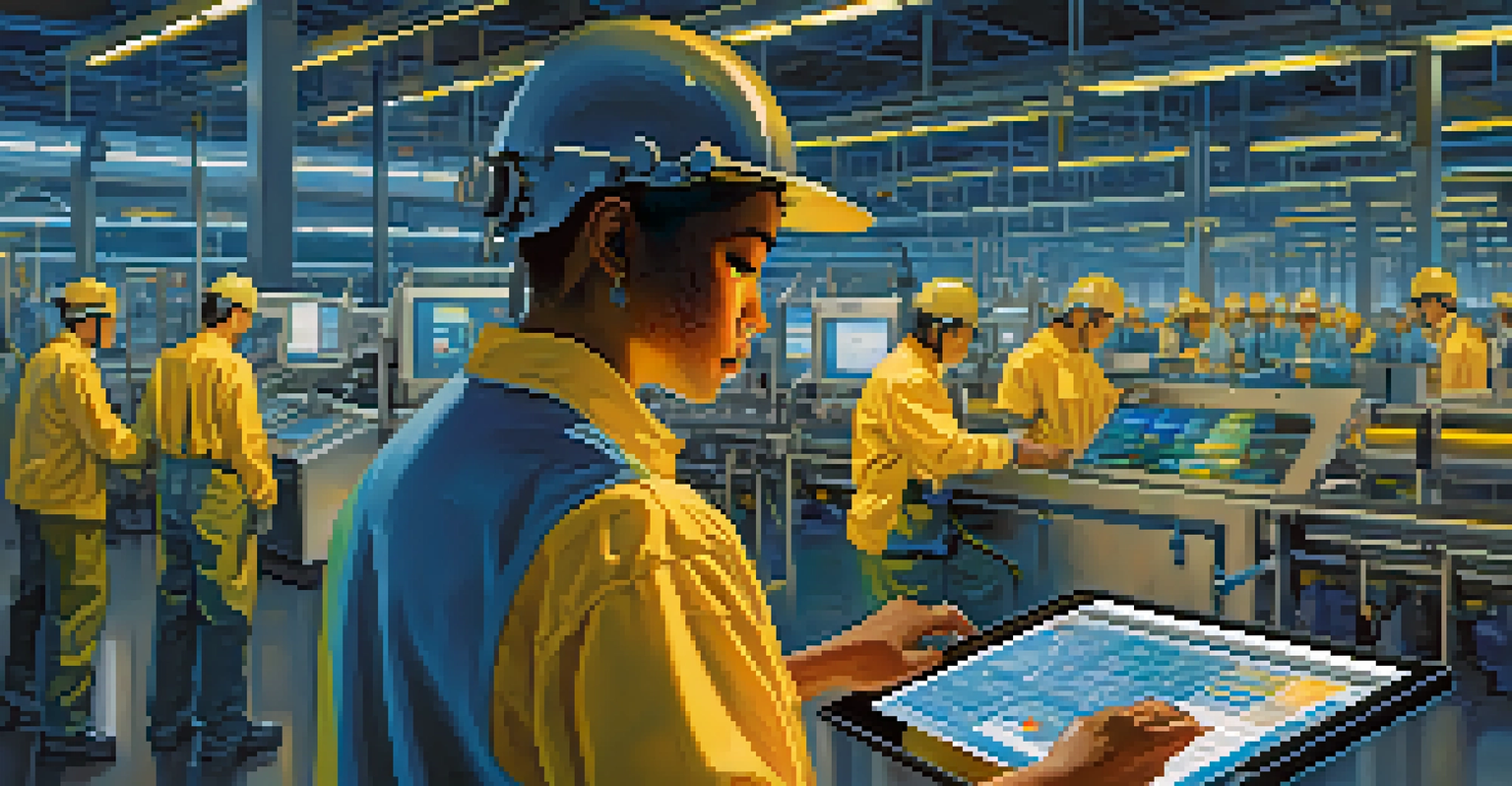New York State's Manufacturing Sector: Current Status and Future

Overview of New York State's Manufacturing Landscape
New York State has a rich manufacturing history that dates back to the Industrial Revolution. Today, it remains a vital part of the economy, contributing significantly to both employment and state GDP. While the sector has evolved, it continues to play a crucial role in driving innovation and economic growth.
Manufacturing is the backbone of our economy, providing jobs and driving innovation.
In recent years, New York's manufacturing sector has faced various challenges, including competition from overseas and technological advancements. However, it has also embraced new opportunities, particularly in high-tech and advanced manufacturing fields. This adaptability is key to understanding the current landscape.
As we delve into the specifics, it's essential to recognize that New York's manufacturing isn't just about factories; it's about a network of skilled labor, cutting-edge technology, and a commitment to sustainability. This multifaceted approach positions the state uniquely in the broader manufacturing narrative.
Key Industries Driving Manufacturing in New York
Several industries are at the forefront of New York's manufacturing scene, with pharmaceuticals, aerospace, and food production leading the charge. The pharmaceutical sector, in particular, has seen substantial growth, fueled by research and development initiatives in biotechnology.

Aerospace manufacturing is another critical component, with companies like Lockheed Martin and Northrop Grumman operating facilities in the state. This industry not only provides high-paying jobs but also fosters collaboration between universities and businesses, promoting innovation.
Manufacturing's Economic Importance
New York's manufacturing sector is a crucial contributor to the state's economy, providing significant employment and GDP growth.
Food production remains a cornerstone of New York's manufacturing, reflecting the state's rich agricultural heritage. With a focus on local sourcing and sustainable practices, food manufacturers are adapting to changing consumer preferences, ensuring their relevance in a competitive market.
Impact of Technology on Manufacturing Practices
Technology is revolutionizing the manufacturing sector in New York, with advancements in automation, artificial intelligence, and data analytics. These tools are enhancing operational efficiency, reducing costs, and improving product quality, which are all essential for staying competitive.
Sustainability isn't just a trend; it's a fundamental shift in how we approach manufacturing.
For instance, manufacturers are increasingly adopting robotics to streamline production processes. This not only speeds up operations but also allows for greater precision, reducing the likelihood of human error. As a result, companies can produce higher-quality products at a faster rate.
Moreover, the integration of IoT (Internet of Things) devices is enabling real-time monitoring of production lines. This data-driven approach provides manufacturers with insights that help them make informed decisions, ultimately driving growth and innovation within the sector.
Challenges Facing New York's Manufacturing Sector
Despite its strengths, New York's manufacturing sector is not without challenges. One of the most pressing issues is the shortage of skilled labor, which can hinder production and growth. As technologies evolve, the demand for workers who are proficient in advanced manufacturing techniques continues to rise.
Another challenge is the increasing cost of doing business in New York, including higher wages and operational expenses. While these costs reflect the state's commitment to fair labor practices, they can make it difficult for some manufacturers to remain competitive against lower-cost alternatives.
Technology Drives Innovation
Advancements in technology, such as automation and IoT, are transforming manufacturing practices, enhancing efficiency and product quality.
Additionally, regulatory hurdles and trade policies can create uncertainty for manufacturers. Navigating these complexities requires a proactive approach, ensuring that companies stay compliant while also adapting to a rapidly changing economic landscape.
Sustainability Initiatives in Manufacturing
Sustainability is becoming a central focus for manufacturers in New York, driven by both consumer demand and regulatory pressures. Many companies are adopting green practices, from energy-efficient production processes to sustainable sourcing of materials, aiming to minimize their environmental footprint.
For example, some manufacturers are investing in renewable energy sources, such as solar and wind power, to power their facilities. This not only helps reduce greenhouse gas emissions but can also lead to significant cost savings over time.
Moreover, sustainable manufacturing practices can enhance a company's reputation and appeal to environmentally conscious consumers. As the demand for eco-friendly products grows, manufacturers that prioritize sustainability will likely find themselves at a competitive advantage.
Future Trends in New York's Manufacturing Sector
Looking ahead, several trends are poised to shape the future of manufacturing in New York. The continued integration of advanced technologies, such as AI and machine learning, will likely drive further efficiencies and innovations within the sector.
Additionally, as consumers become more focused on sustainability, manufacturers will need to adapt their practices to meet these expectations. This shift could lead to a rise in local sourcing and circular economy initiatives, where waste is minimized and resources are reused.
Focus on Sustainability
Manufacturers in New York are increasingly prioritizing sustainable practices to meet consumer demand and regulatory pressures.
Furthermore, the collaboration between educational institutions and manufacturing firms is expected to strengthen. By aligning workforce training with industry needs, New York can ensure a steady pipeline of skilled workers ready to tackle the challenges of tomorrow's manufacturing landscape.
Conclusion: The Path Forward for New York Manufacturing
In conclusion, New York's manufacturing sector is at a pivotal juncture, balancing a rich history with the demands of modern industry. By embracing technology, sustainability, and workforce development, the state can position itself as a leader in the manufacturing realm.
While challenges such as labor shortages and rising costs persist, the opportunities for growth and innovation are abundant. With a proactive approach and a commitment to collaboration, New York can navigate these complexities and emerge stronger.

Ultimately, the future of manufacturing in New York is bright, driven by a spirit of resilience and adaptability. As the sector evolves, it will continue to play a vital role in shaping the state’s economy and providing quality jobs for its residents.